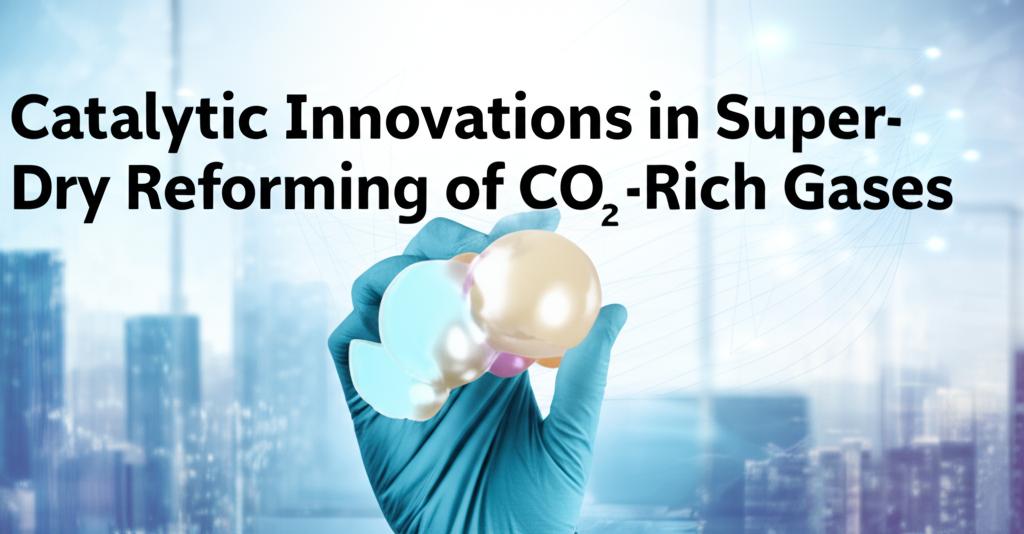The pursuit of efficient carbon dioxide (CO2) utilization has spurred significant research into super-dry reforming of CO2-rich gases. This innovative approach aims to convert CO2 and methane (CH4), both potent greenhouse gases, into valuable syngas – a mixture of hydrogen (H2) and carbon monoxide (CO). Syngas serves as a crucial building block for producing cleaner fuels and various chemicals.
Recently, a notable advancement in this field involves a novel process for the direct production of syngas from CO2-rich natural gas, where the CO2 to CH4 ratio is two or greater. This "super-dry reforming" method utilizes high-temperature tandem electro-thermocatalysis based on solid oxide electrolysis cells (SOECs). These cells operate efficiently at temperatures ranging from 600 to 850 degrees Celsius, converting CO2 and water into CO and H2 with high reaction rates and energy efficiency, offering a cost-effective solution for CO2 utilization and hydrogen production.
A key element of this breakthrough is the development of highly efficient and stable catalysts. Researchers have successfully created high-density interfacial active sites by in-situ exsolving rhodium (Rh) nanoparticles onto a ceria (CeO2-x) support. These Ce3+-VO-Rhδ+ sites have demonstrated remarkable performance. Specifically, the Rhδ+ sites are primarily responsible for CH4 dissociation, while the interface, rich in oxygen vacancies, promotes CO2 adsorption, activation, and the reverse water-gas shift (RWGS) reaction. This same interface also catalyzes the electrochemical reduction of water (H2O), further enhancing CO2 conversion and H2 selectivity.
In this coupled electrochemical system, the in-situ electrochemical reduction of H2O byproducts generates H2 and oxygen ions (O2-). These ions migrate through the electrolyte and are electrochemically oxidized to O2 at the anode. This mechanism drives the RWGS equilibrium forward, pushing CO2 conversion and H2 selectivity beyond conventional thermodynamic limits. Impressively, when operating with a CO2/CH4 ratio of 4, this system has achieved methane conversion of 94.5% and CO2 conversion of 95.0%, with nearly 100% selectivity towards CO and H2. The apparent methane reducibility also reached its theoretical maximum.
Super-dry reforming, by emphasizing a high CO2/CH4 feed ratio, inherently shifts the reaction pathway away from thermodynamically favorable carbon deposition regions. This helps in mitigating catalyst deactivation due to coking, a common challenge in traditional dry reforming. The optimization of catalyst design, including pore structure and geometry, is also crucial for enhancing CH4 and CO2 conversion rates and minimizing carbon deposition. Studies have shown that catalysts with 3-D cubic pore structures can exhibit superior activity and stability.
The development of catalysts capable of sustained long-term operation under harsh reaction conditions remains a key focus. Strategies to improve catalyst stability include tuning interactions between metal active sites and supports during synthesis to suppress coke formation and metal sintering. For instance, removing water from zeolite supports has been shown to strengthen interactions with nickel, a commonly used catalyst metal.
These innovations in catalytic super-dry reforming open new avenues for the direct utilization of CO2-rich natural gas and industrial tail gases, potentially leveraging renewable energy sources. This approach not only offers a pathway to produce valuable chemicals and fuels but also contributes to mitigating greenhouse gas emissions by transforming CO2 from a waste product into a valuable carbon source. Further research and development in catalytic materials and process integration are crucial for advancing these technologies towards industrial-scale application.

